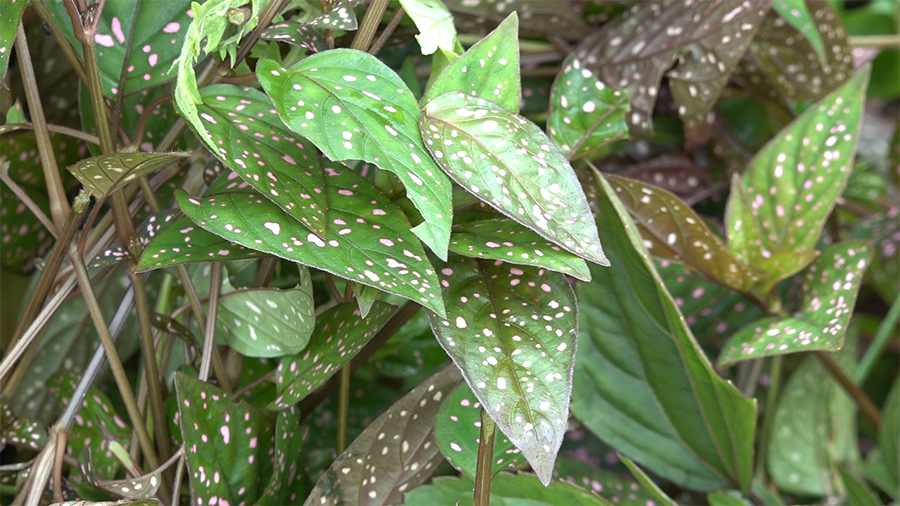
A rapidly spreading invasive plant species is wreaking havoc in the farmlands and gardens of Khempagang village of Tading Gewog in Samtse. The plant, believed to have been initially introduced as a harmless indoor species, has rapidly propagated, causing concern among villagers.
 The plant can grow up to a height of one meter and has appealing vibrant leaves with pink spots scattered all over the leaves.
The plant can grow up to a height of one meter and has appealing vibrant leaves with pink spots scattered all over the leaves.
According to the villagers, the plant was inadvertently introduced as an indoor plant a few years ago because of its appealing features.
But there is more to what meets the eyes as the plant has turned into what villagers say an aggressive species.
Today it has overtaken vast areas of farmland, posing threat to agricultural productivity.
“We don’t know what to do with this plant. It doesn’t die even when we cut it. It rather grows back. Even cattle don’t eat it much. The plant also seems to take in all the soil nutrients. It grows very fast and now it has grown everywhere in our village,” said Roop Kumar Bhujel, a resident.
“Whether we plant potato, broccoli or chilies, this plant also starts to grow along with the crops. And when we uproot the plant, it starts to grow back in just two to three days. The plant seems to multiply very fast,” said Tilak Bdr Ghalley, another resident.
Unable to ascertain the plant’s true identity, local farmers doubt it to be a new invasive plant species.
“I have this plant growing all over my farms and surroundings of my house. This I believe is like an invasive weed which will not allow the essential crops or any nearby plants to grow well,” said Dilip Ghalley, a resident.
The villagers also say that the plant not only competes with crops for vital nutrients and resources but obstructs sunlight, leading to stunted growth and reduced agricultural yields.
The District Agriculture Sector remains unaware of this issue and has yet to initiate a comprehensive investigation.
Moreover, the officials said they haven’t received any complaints from the public so far.
However, the District Agriculture Sector for now has identified the plant as an ornamental plant called the Polka Dot plant.
They suggested that complete uprooting is the only effective method to stop it from multiplying and control its invasive nature.
Passang Dorji, Samtse







